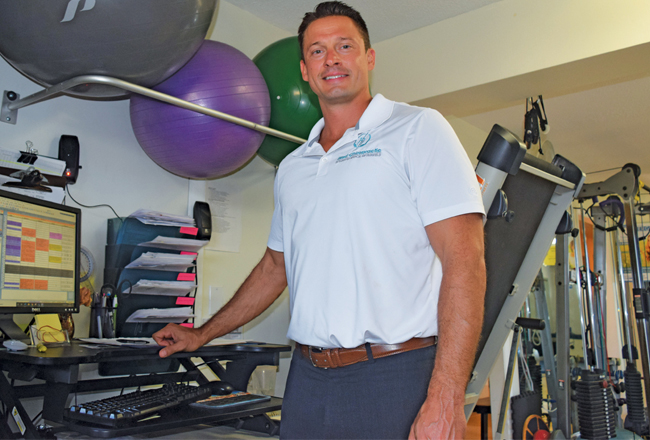
When Dr. Jeffrey Walczyk was in school, his passion for athletics resulted in injuries that required medical care.
“The human body fascinated me and I wanted to know more about those injuries that I sustained,” he recalled.
Walczyk would pursue medical studies, graduating from New York Chiropractic College in 2007. In 2008, he purchased a medical practice in Fairfield that he renamed iMed Chiropractic and transformed it into what he described as a “hands-on physical therapy, chiropractic-pain center.” This practice ”” which is subtitled Integrated Medical of Fairfield ”” offers different therapists and a mix of traditional and alternative medical treatments.
In this edition of Suite Talk, Business Journal Senior Enterprise Editor Phil Hall speaks with Walczyk regarding his approach to health care.
What differentiates iMed Chiropractic from other medical centers?
“When we get our patients in here, it”™s a lot more than getting them to feel better ”“ it”™s about correcting their ailments. We do so with our hands-on approach. We triage each patient with the full staff available to them.
“In a lot of other places that I”™ve been to as a patient, you go in for your chiropractic adjustment and that”™s it ”“ you”™re done, that”™s your treatment. But, then a couple of weeks go by, and you”™re back again. What we have here is the ability for patients to come in and have each one of the therapists available for them. After we examine them, we set a goal and can expedite all of the services a lot faster.
“Each one of us has a really great skill set. I use the analogy about the next tool in the toolbox. We have our toolbox full of tools and not limited to using one type of technique or one type of procedure. Patients can see the therapist, massage therapist, chiropractor, even a medical doctor for acute needs. And patients really love that. We explain what to expect in the first day of treatment. As they start getting better, their treatment frequency and plan changes ”“ it”™s not the same old cookie-cutter of coming and getting the same old treatment every single time.”
Why is this approach more beneficial for patients?
“We look at everything from every vantage point. We offer alternative medicine-type treatments, including a little bit of homeopathy and nutrition, and the patient can view us from a different perspective.
“A lot of patients come in with a view of what they want and what they know, which is great because we can always identify what their expectations are and also teach them there are other things to help them out. We are not forcing them to choose.”
Who are your patients?
“Our age range would be as young as 5 to my most elderly patient who is 98. This may sound strange, but there are seasons for sports medicine and health care. We will be much busier during springtime, once everyone is out of their hibernation mode and the weekend warriors are back. We have a large group of patients who come in during the summer when they have more freedom and hours. We are not, by any means, seeing hundreds of patients a week. We are seeing dozens of patients a week and that number is growing, which is a great sign for the team and everyone who works here.”
You also prescribe medical marijuana to qualified patients. How many patients are using this?
“Less than 5%. Some patients thrive with the hands-on approach of the manual therapies that fix structural issues to a certain point. With the medical marijuana, it is not going to fix the structural issue, but if they can sleep well and feel better, then we guide them without the help of pharmaceuticals. This is something that we are able to offer that they may not be able to get from their primary care.”
What has been your most challenging consideration in patient care?
“There are a lot of patients who come in after waiting too long. Their joints, discs, muscles and tendons have become worn down and arthritic. Those are the difficult ones. They”™ve ignored the body signs that they should have been seen by someone. It might have been a little 3-out-of-10 pain, but it”™s been consistent and they just allowed it to get out of control.
“We are, unfortunately, the last stop for a lot of patients before surgery and that makes it a little more difficult. But we offer them comfort and explain to them what happened and what we can do to help them out. For others who are a little more familiar with chiropractic and physical therapy and sports medicine, they like that they”™ve found this approach.”
Do you foresee franchising this type of operation?
“The medical provider I purchased this practice from had a couple of clinics. We are looking to expand. I would not be opposed to a larger office and taking on more staff, being able to help more people. Even incorporating more types of therapists.
“I would love to be able to share what we have here with as many people as possible. What I would emphasize is that we”™re not a big mill, and I fear that once we get really big that holistic touch could go out the window.”





















